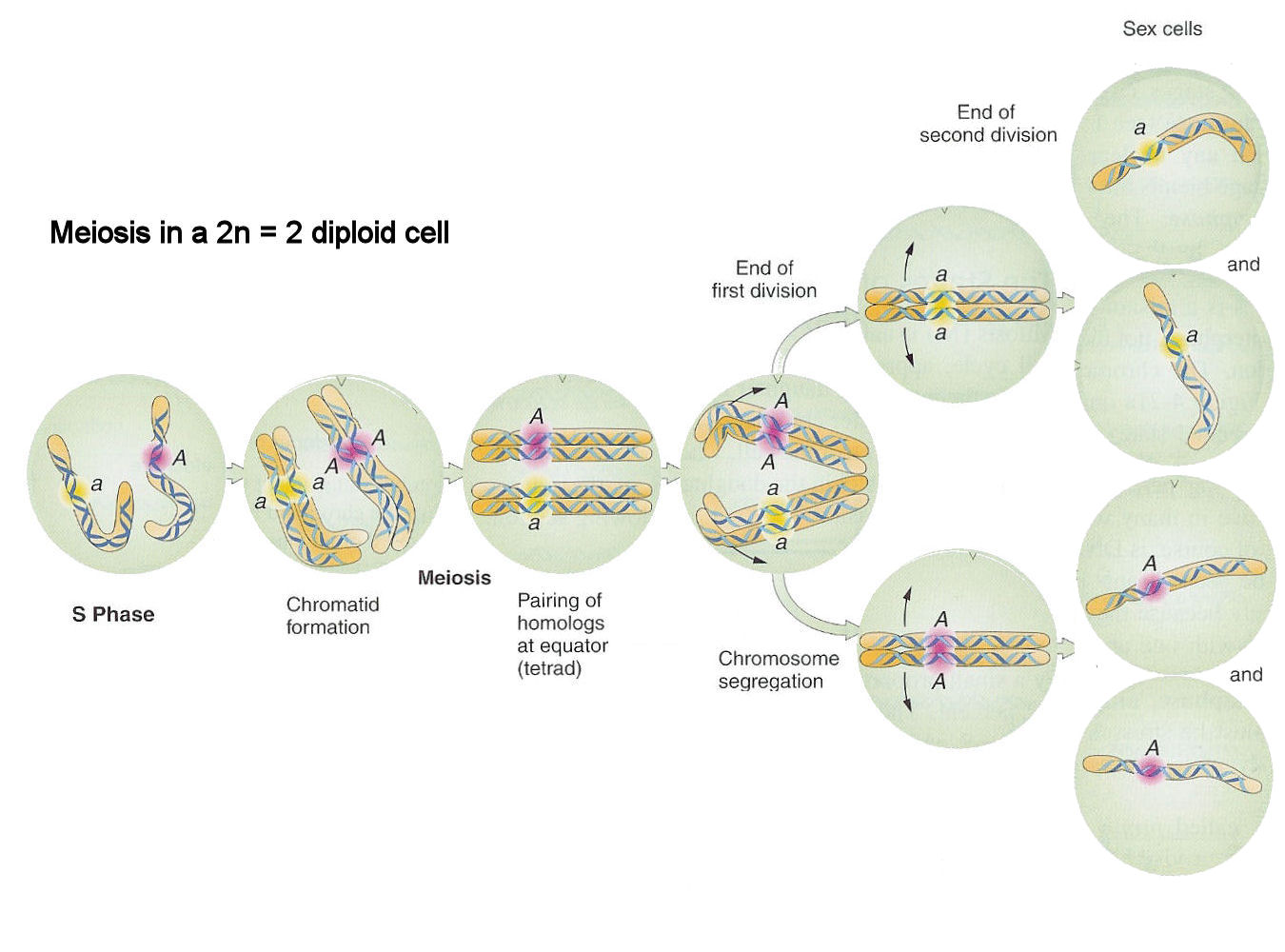
Meiosis in a diploid organism
The
diagram shows meiosis in
a
diploid cell with 2n = 2: there are two
chromosomes,
each with one chromatid and
a centromere.
The cell is heterozygous at
the
A
locus (Aa). In the synthesis
(S) phase, the DNA
replicates as part of chromosome duplication: the two
chromatids in each chromosome each remain attached
at a single centromere. In the third stage, a tetrad,
composed of two chromosome pairs (homologs) that
include four chromatids, lines up at the cell
equator. In the fourth stage, each chromosome is
pulled to one or the other cell pole. Note that the chromatids do not separate: each
daughter cell receives two copies of one or the
other allele (A or a). In the fifth stage,
in each daughter cell, the two chromatids attached to each
centromere are separated to opposite poles (without DNA replication), so
that each of the new daughter cells receives identical
alleles (either a
[above] or A
[below)]. This produces a total of four haploid gametes.
In males, all four haploid cells typically mature as sperm. In females, first division typically produces one normal-sized cell and a small cell called a polar body, which does not mature further. The reduction division of the remaining cell also produces two unequal-sized cells, one of which (the second polar body) does not mature. Thus each meiosis in a female produce only a single haploid egg with one or the other allele. However, other meioses produce single eggs with the alternative allele, so that overall the number of eggs with either allele is equal.
In males, all four haploid cells typically mature as sperm. In females, first division typically produces one normal-sized cell and a small cell called a polar body, which does not mature further. The reduction division of the remaining cell also produces two unequal-sized cells, one of which (the second polar body) does not mature. Thus each meiosis in a female produce only a single haploid egg with one or the other allele. However, other meioses produce single eggs with the alternative allele, so that overall the number of eggs with either allele is equal.